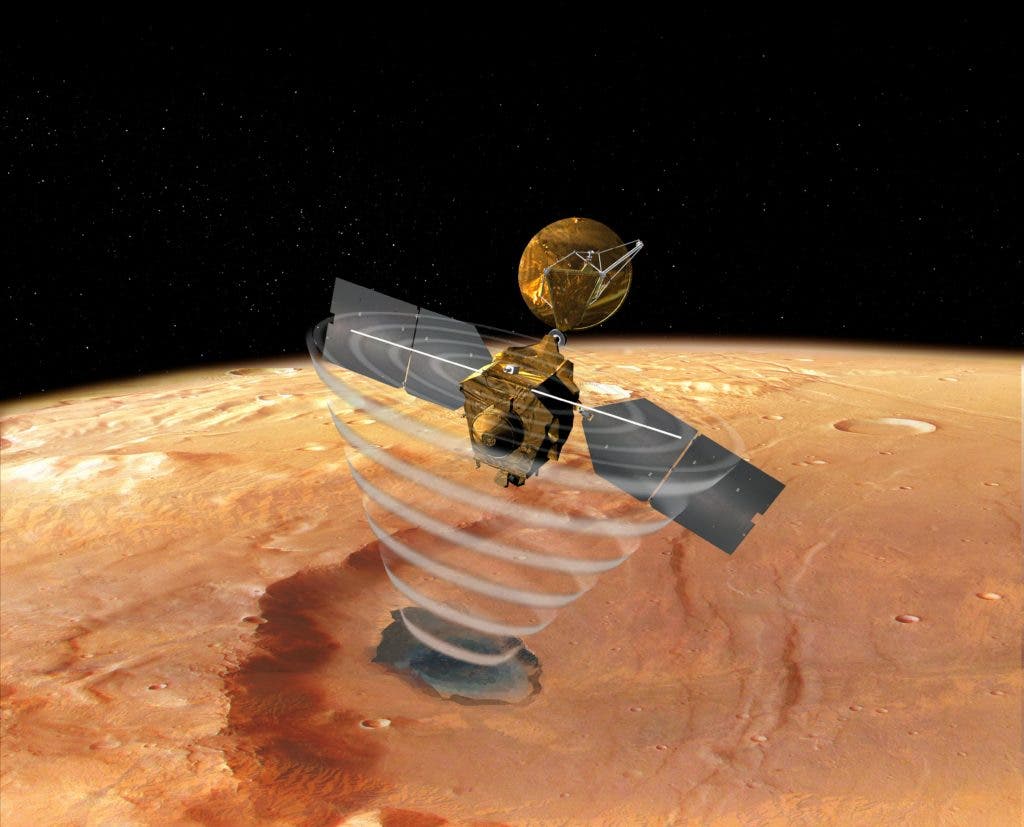
Since March 10, 2006, NASA’s Mars Reconnaissance Orbiter (MRO) has been continuously looping the Red Planet, collecting daily science about the its surface and atmosphere. On May 15, over 13 years after its first trip around, the MRO made its 60,000th orbit. On average, it takes just 112 minutes for the satellite to round the entire planet — that’s two miles (3.4 km) per second.
“MRO has given scientists and the public a new perspective of Mars,” said Project Manager Dan Johnston at the Jet Propulsion Laboratory which leads the mission. “We’ve also supported NASA’s fleet of Mars surface missions, allowing them to send their images and discoveries back to scientists on Earth”.
While rovers and landers are able to retrieve info about the Martian surface and subsurface, orbiters have the benefit of being able to view wide swaths of the entire planet; MRO can actually target any point on the Martian globe approximately once every two weeks. One of MRO’s most important pieces of equipment is the High Resolution Imaging Science Experiment camera (HiRISE), which is powerful enough to see surface features the size of a dining room table from 186 miles (300 kilometers) above the surface.
Over its lifespan, MRO and HiRISE, have given NASA some really cool images such as CO2 ice sublimating, migrating sand dunes, and meteorite strikes reshaping the Martian landscape, and also provided data on the massive global dust storm that proved fatal to the Opportunity rover in 2018. The product of the University of Arizona is one of six instruments aboard MRO and is the largest aperture reflecting telescope currently in deep space.
“Mars is our laboratory,” said MRO Deputy Project Scientist Leslie Tamppari of JPL. “After more than a decade, we’ve collected enough data to formulate and test hypotheses to see how they change or hold up over time.”
MRO is one of a few Martian orbiters which transmit data to Earth each day. Later this month MRO is expected to hit another milestone when it transmits its first terabit of data (one trillion binary digits, or 1,000,000,000,000 bits), most of which is relayed from the Curiosity rover. The orbiter was launched from Cape Canaveral in 2005, on a search for any signs of water that may have persisted on the Red Planet. It has greatly improved our understanding of Mars and its environment.






